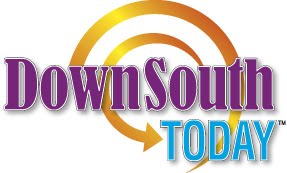 |
| James Gibson paints Florida with his magic fingers |
In the beginning there were 26 Highwaymen including one woman, Mary Ann Carroll. Early on, they gathered together in Fort Pierce, Florida and painted in a local backyard, producing some of the most spectacular scenes of Florida’s landscapes for weekend sales to tourists in Miami, Palm Beach and Fort Lauderdale. Their story is pure Americana. The Florida Highwaymen are African American artists, mostly from the Fort Pierce area, who only painted landscapes and made a living selling them from the1950’s through the next three decades. Experts estimate that they collectively sold over 100,000 paintings and with major stories about them appearing in prestigous publications like The New York Times and People magazine, their works have become quite collectible. Many of their paintings command prices well into the thousands of dollars.
While paintings by the Florida Highwaymen are prized by collectors, their story is about much more than art. They sold their art on the highways of Florida and did not call themselves the Highwaymen. It was a name bestowed in an article by a journalist and it stuck. It turned out to be a marketing blessing, an early example of successful branding. As they began working in the segregated South, they soon learned that art galleries would not sell the works of these unknown, self-taught African Americans. Undaunted, the Highwaymen loaded up a car (Ms. Carroll owned the car) with new paintings to sell their work to tourists. Prices were from $5 to $15 dollars. If you were fortunate to buy one of these from James Gibson during the 1970’s, you have a painting that is very vauable.
THE JAMES GIBSON STORY
Now in his seventies, James Gibson remains one of the most active Highwaymen, still making a living by creating and selling original art. Gibson, who still travels the roads to make sales, estimates he has painted more than 10,000 Florida landscapes and he’s going strong. I first met him just off the Florida Turnpike in Davie less than a mile from where the Miami Dolphins were practicing. Gibson, a rather ebullient gentleman, drove up in his car, we exchanged greetings and he opened his trunk filled with some spectacular paintings. For those who have not beheld a Gibson landscape featuring a brilliant scarlett Royal Poinciana, you have not yet lived a full life. It is a visual experience like no other, resonating with beauty, hamony and adventure.
James Gibson was awarded the Florida Division of Cultural Affairs Arts Recognition Award for 2007 and created an original painting for Florida Heritage Month 2007, titled "Road Less Traveled." Gibson was designated as Florida’s Ambassador of the Arts in 2005, created an ornament for the White House Christmas tree and his paintings were featured in Steven Spielberg’s movie "Catch Me If You Can." Spielburg collects Gibson paintings and has paid big bucks for some of his early paintings.
A native of Fort Pierce, James Gibson, one of the best known Florida Highwaymen, is a fourth generation Floridian. As a boy, he sold drawings of cowboys and stagecoaches at school for nickels, an indicator of his entreneurial skills. Gibson began taking painting lessons as a teenager but left Florida to study biology at Tennessee State University and later returned to his Fort Pierce home to paint sunsets, mangrove swamps, high tides, sleepy lagoons, ancient bogs and wind bent palms that make Florida’s landscape a national visual treasure.
It is well documented that during the early days of their careers, the Florida Highwaymen were influenced by noted Florida landscape artist A. E. Backus who sometimes provided them with paint and other materials. Some academic art observers tried to label this group as the "Indian River School," but they became well-known as the Highwaymen and it seems that is their name for the ages.
True to the self-taught form, the Highwaymen painted on inexpensive Upson board and framed their paintings with crown molding, adding some gold or silver paint, packed them into their Ms. Carroll’s car often before the oil dried and sold them throughout the southeastern coast of Florida. Author Gary Monroe in his outstanding book, The Florida Highwaymen (University of Florida Press), observes that being poor, they were driven greatly by the need to make extra income. Survival instincts inspired some wonderful paintings.
A very accomplished painter, James Gibson, one of the few living Highwaymen, continues to make his livelihood as an artist. With over 40 years of painting Florida's landscapes, he paints today much like he did in the beginning. While Florida has changed considerably in recent decades, Gibson retains his remarkable ability to paint the surf reflecting moonlight, gorgeous cloud formations, white sand rural roads, tropical sunlight and deep blue lagoons.
Some who remember seeing the Highwaymen selling roadside in blistering heat and unbearable humidity told me that locals often derisively called these paintings “motel art.” Call it what you will, but this art certaiinly had an interesting journey. Some paintings have been found in dumpsters, many still hang on the walls of honky tonks and seafood shacks along the backroads of the Sunshine State.
One of the vintge painings by Gibson is exhibited now at the wonderful Jeanine Taylor Art Gallery in Sanford, Florida. The area is worth a visit any time of year and the gallery may be enjoyed through their website: http://www.jtfolkart.com/.
READER RESPONSE--
Where did you meet James Gibson or the only female in the group, Mary Ann Carroll?
Which Highwaymen landscapes are your favorites? Lagoons? Bay in the moonlight? Other?
Which museums or galleries exhibiting their works have you visited?
READER RESPONSE--
Where did you meet James Gibson or the only female in the group, Mary Ann Carroll?
Which Highwaymen landscapes are your favorites? Lagoons? Bay in the moonlight? Other?
Which museums or galleries exhibiting their works have you visited?

